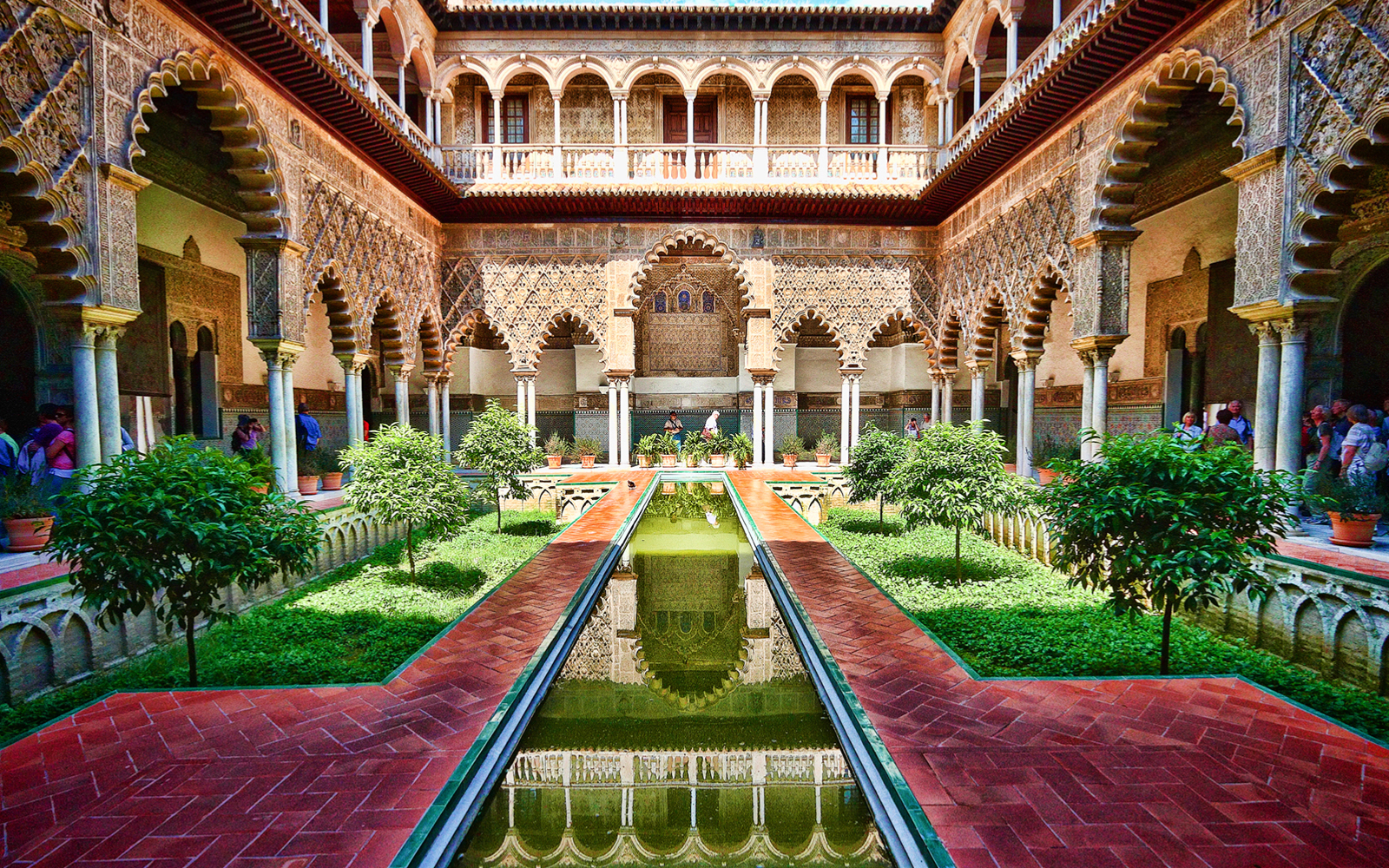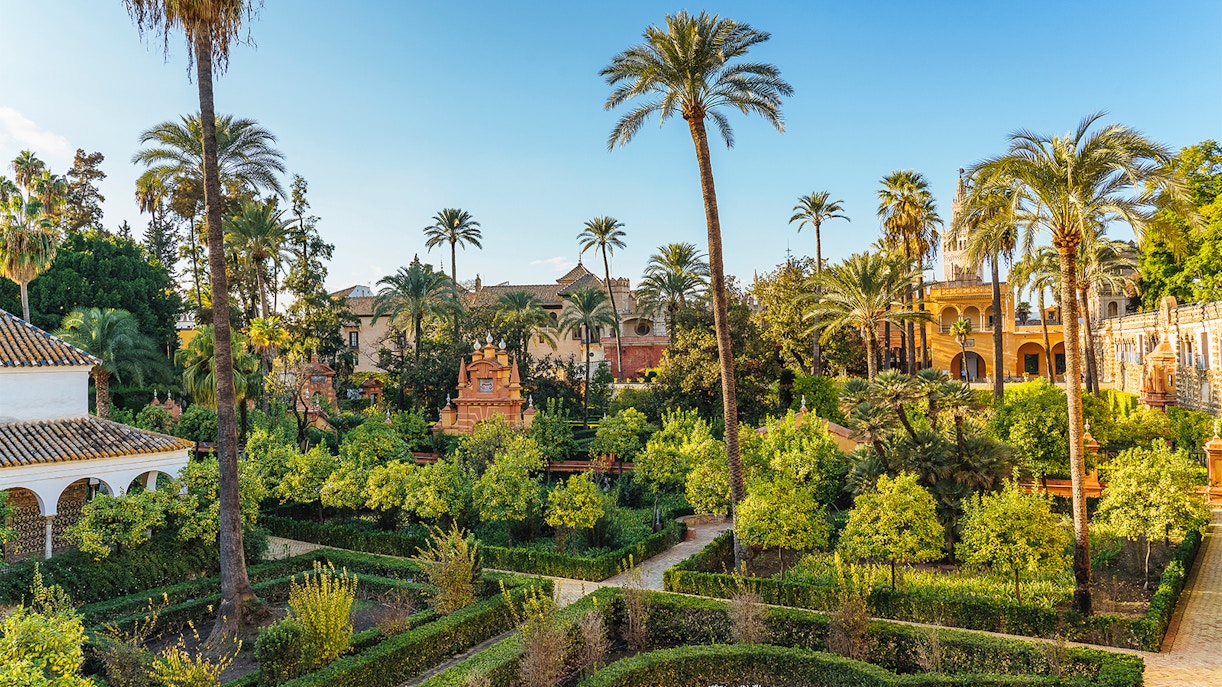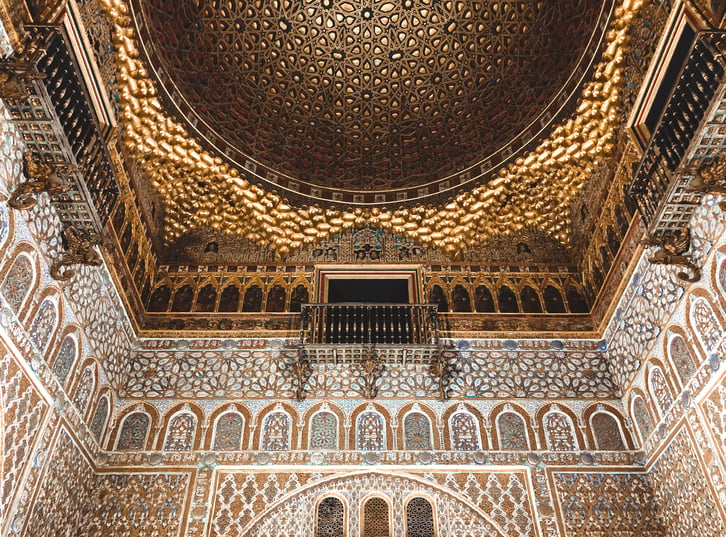From modern works of art to historical structures from the middle-ages, it’s no secret that Seville is famous for its elegant and diverse architecture. The sheer variety is stunning enough, but the historical significance of these structures are informative for both students and instructors looking to explore Spain, Seville, and Spanish History.
You can’t visit Seville without exploring the gorgeous Royal Alcázar of Seville, a royal palace constructed by the Umayyad Caliphate on the site of a Roman settlement that would eventually become Spain. This building is not only stunning but also rich in Spanish History. This structure combines elements of Gothic architecture with both Moorish and Christian influence, which both occupied the palace at some point in history, making the Royal Alcázar of Seville a blend of unique historical styles not seen commonly in architecture.

The foundations of the palace were built in 712 CE with the arrival of Moorish forces and their takeover of Visigothic land. After the establishment of the Caliphate of Cordoba, the royal palace saw incredible upgrades. Even once the Caliphate of Cordoba fell, the Taifa Kingdom of Seville maintained the beautiful palace. The impacts of the Moors through the Taifa Kingdoms and Umayyad Dynasty on the structure can be seen through the beautiful, lush Alcazar gardens. These gardens, depicted below, are theorized to be modeled after the paradise described in the Koran, so have fun taking in the heavenly scenery!

With the arrival of more Moorish forces in Al-Andalus, including the Almohads and Almoravids, the palace grew in Islamic architectural influence. The plasterwork courtyard, lattice ceilings depicted below, and archways of the palace are heavily inspired from Islamic styles. However, a carefully trained art historian can tell that most of the design in the palace reflects the Mudéjar style, an architectural style that blends christianity and islamic building styles. As Al-Andalus’ control over Seville collapsed in 1248 CE from the rampaging tide of the Reconquista, Christian power rose, and with it, the Royal Alcázar of Seville was assimilated under Christian rule, who also added flares of traditional Gothic style in the name of the Visigoths. The spiked arches and ribbed vaults seen in the upper floors all point to remnants of Gothic architecture used in the building. This historical time frame allowed the unique architecture of past Seville rulers to accumulate, eventually concluding with Renaissance architectural styles of large marble columns that round out the design.

The Royal Alcázar of Seville isn’t just one of the most beautiful structures in the world, but it also serves as a historical timeline of Spain and the occupancy of Seville that can be seen through it’s architectural influences. Seville’s history is literally scrawled out across the walls of the palace, and can be seen on every pillar and archway. Instructors and students alike will have no shortage of histories to explore and unpack through this historical monument. If you get the chance to swing by the Alcázar, drop by the Alcázar – Andalusí Tapas, a restaurant that serves Seville favorites like gazpacho in a tapas-style experience just outside the palace itself. The experience of visiting, the rich history of the building, and the Sevillian immersion of being in the heart of the city make the Royal Alcázar of Seville a must-stop for anyone looking to explore Spanish history and Seville.
